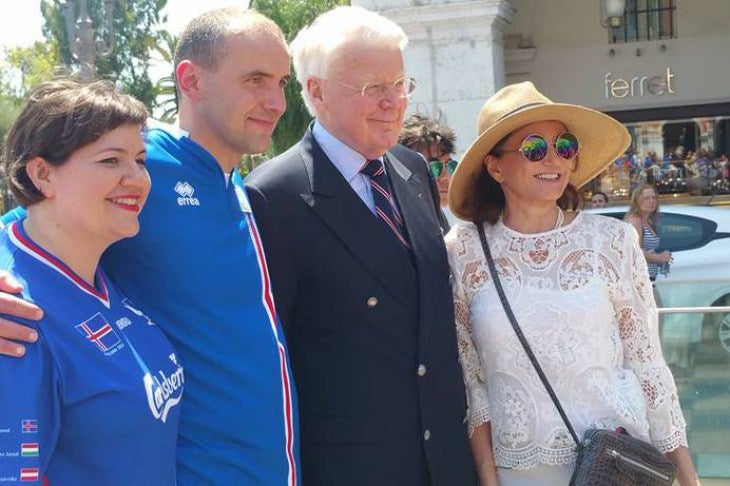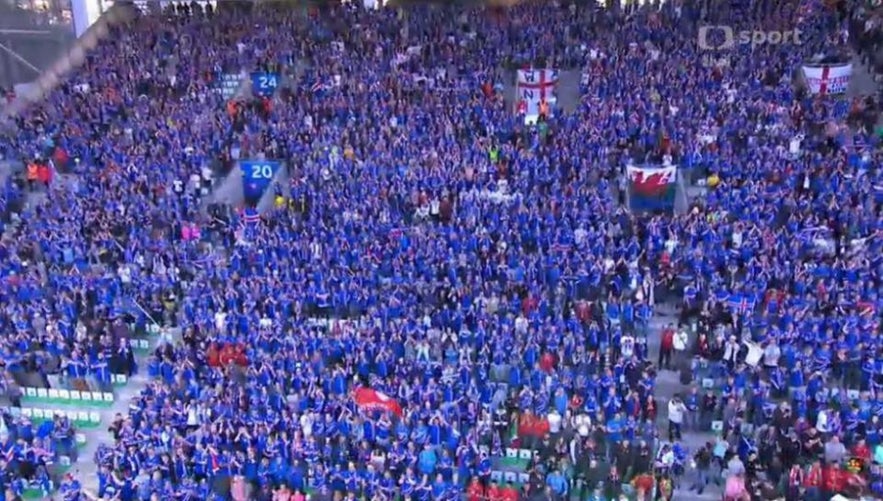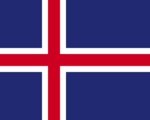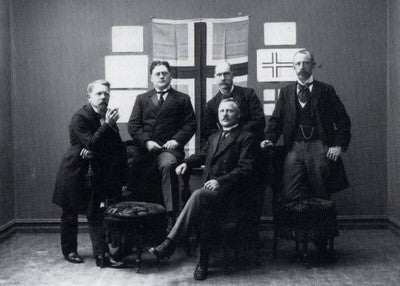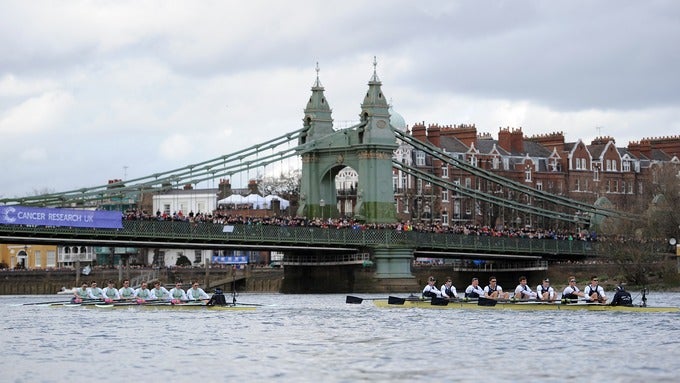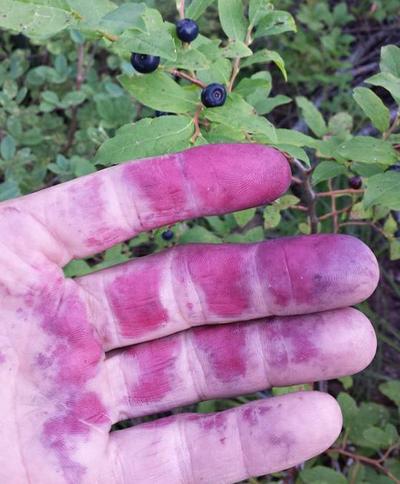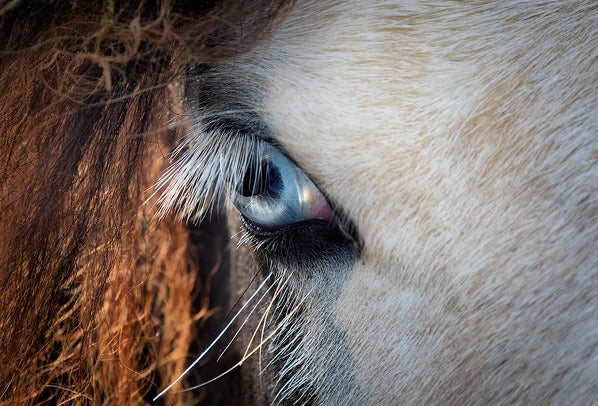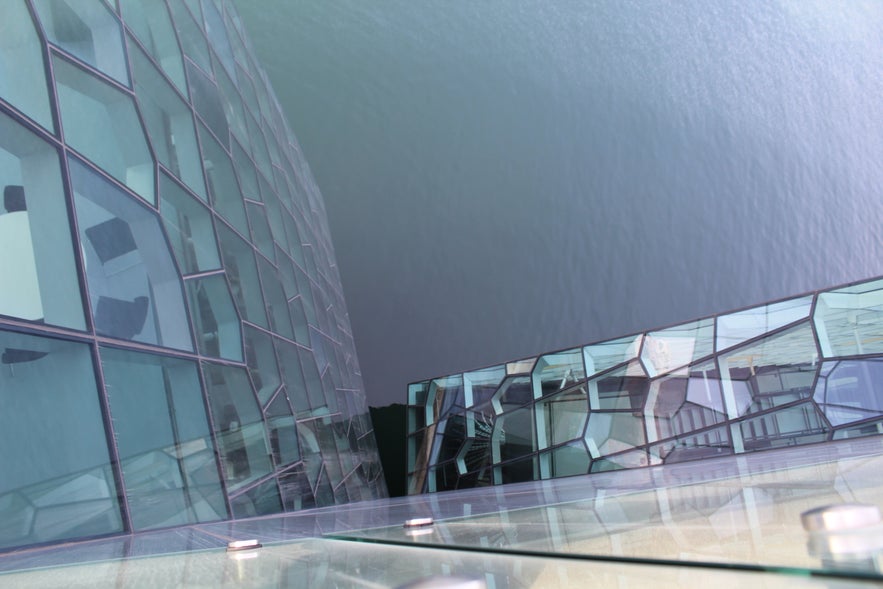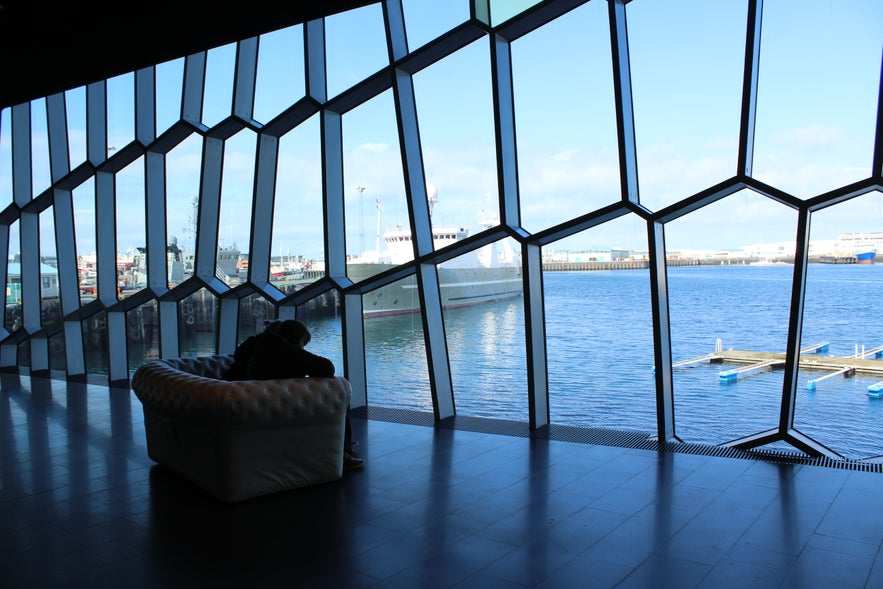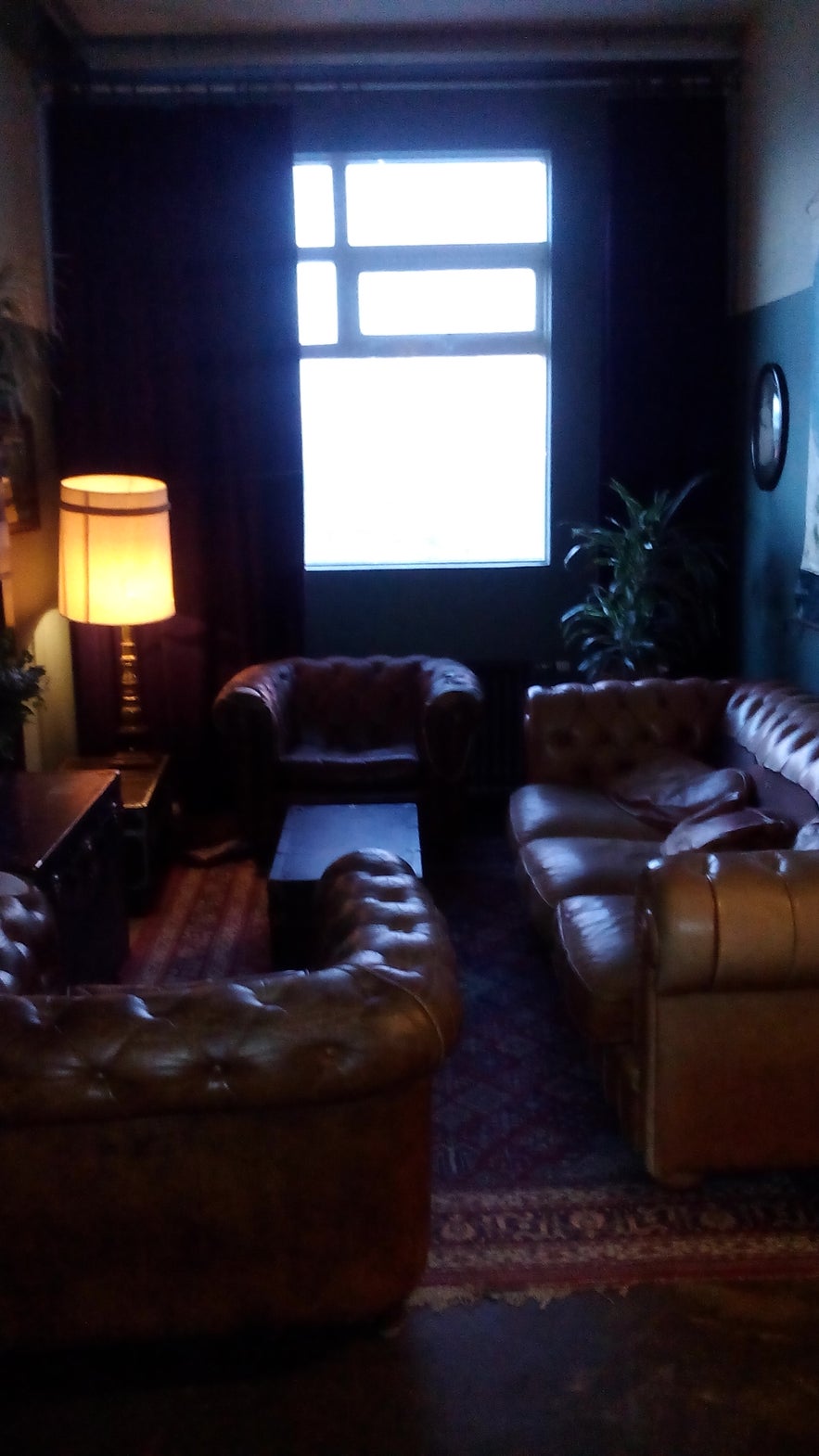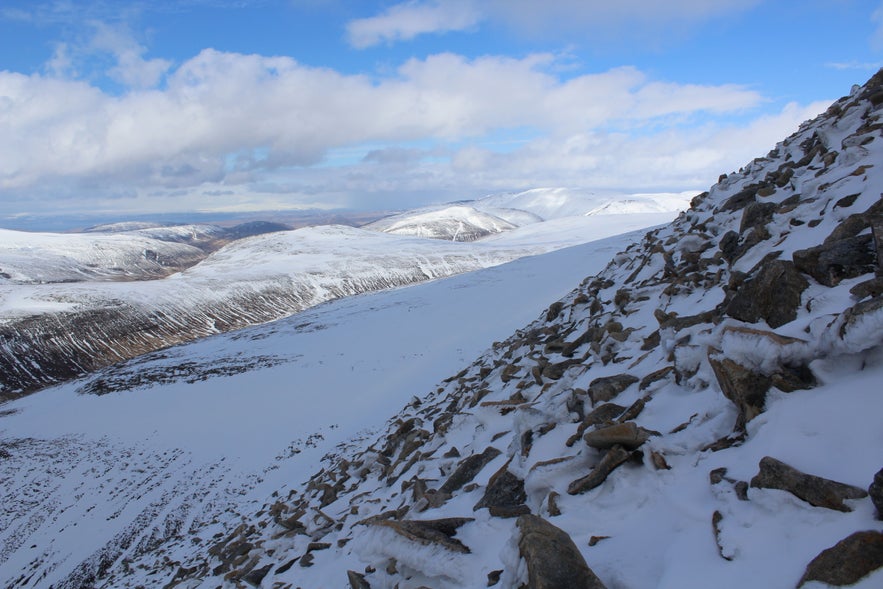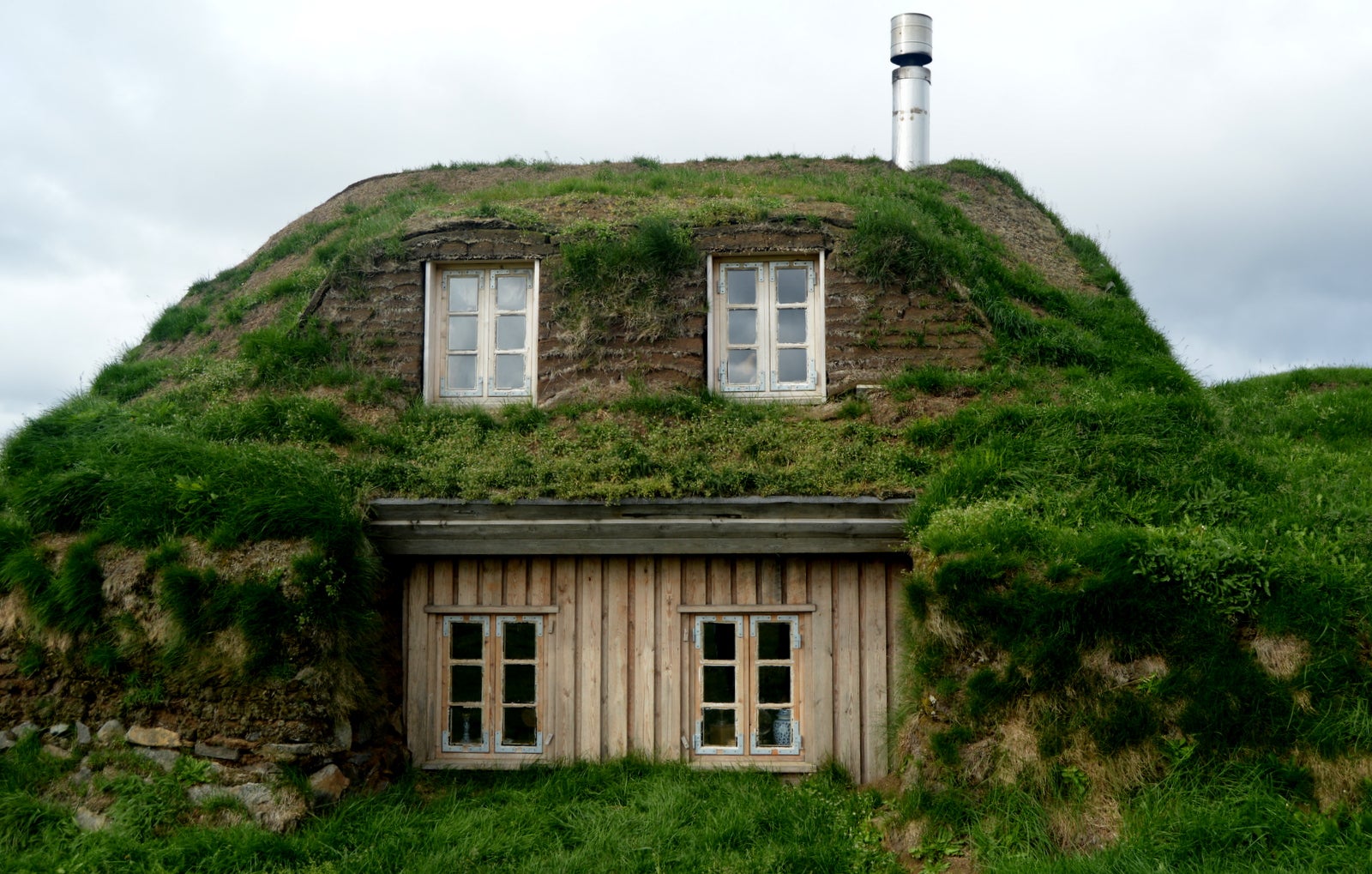Looking at my first pictures of Iceland from a research trip this past April, I see a lot of blue. Iceland is surrounded by the tones of sky and water and cast in bluey-hued shadows – except when it isn’t, but that’s another story. Right now, I’m in a blue mood.
The Sun Voyager sculpture on Reykjavík shore
For this post, I am using my own photos, apart from a few as noted, and I haven’t meddled with any of my pictures in any way, like using Photoshop or other enhancement tools. This is just how it looked at the moment when each picture was snapped : )
Football Blue
The world has recently witnessed Icelandic blue abroad, when a significant number of the islanders (perhaps as many as 10%!) travelled to France in support of their Euro 2016 men’s football team. Even the country’s president and president-elect and their wives flew south to join the massive crowd of cheery supporters.
Photo credit – Iceland Monitor.
President Ólafur Ragnar Grímsson and First Lady Dorrit Moussaieff (to the right in the photograph) with president-elect Dr. Guðni Th. Jóhannesson and his wife Eliza Reid in France for Euro 2016.
Iceland’s awesome women’s national football team has been competing at the European Championships for years (nine times in UEFA Women’s Champions League and five times in FIFA Women’s World Cup) but this was the first time the men’s team qualified. Iceland is said to be the smallest nation, on population, ever to reach the men’s European Championship or World Cup.
Tickets for 2018 World Cup home qualifier matches have gone on sale last week. Here is a link, in case there are still any tickets left unsold : )
A wall of Iceland team fans at Euro 2016 - Photo credit - Gylfi Þór Sigurðsson
Blue Flag
Guðni was sworn into office as president of Iceland on the first day of August. First Lady Eliza has said that his favourite colour is blue. Perhaps Guðni’s affinity for blue relates to the island’s flag?
The blue of the Icelandic flag was originally intended to represent blue mountains (along with white ice and red fire). In his essay about the history of the flag, which was published in Icelandic by the Prime Minister’s Office in 1991, Birgir Thorlacius’ explains that Matthías Þórðarson presented his design for a national flag to Reykjavík Students' Association on September 27, 1906. His idea essentially matched what has become the final design but this was not resolved for another nine years.
National flag of Iceland - Photo credit Forsætisráðuneyti
State flag of Iceland - Photo credit Forsætisráðuneyti
In 1913, with Danish King Christian X’s blessing, the Icelandic Prime Minister appointed a Flag Committee, which was tasked with choosing a definitive design for Iceland’s new flag. Their choice was to be guided by the will of Icelanders but had to be a design that the king would approve since Iceland was still under Danish rule.
The first Flag Committee - photo from Birgir’s essay
Agreeing on a flag design became so contentious an issue that two more flag committees had to be elected. The king refused to ratify the recommended design for a new Icelandic flag when it was proposed to him by the Icelandic Prime Minister Sigurður Eggerz,. Soon afterwards, Sigurður lamented Christian X's refusal, declaring that the king’s unwillingness to issue a decree on the flag merely strengthened Sigurður’s own resolve to resign, which he then did.
New Prime Minister Einar Arnórsson took office and on June 19, 1915 a royal decree was issued that specified Iceland’s flag design. The blue background was described as “sky blue (ultramarine)”.
At noon on December 1, 1918, acting Prime Minister Sigurður Eggerz (a lot can happen in three years!) spoke at the first hoisting of Iceland’s flag outside Government House. In his address, he said:
“The flag is the symbol of our sovereignty. The flag embodies the most beautiful ideals of our nation, every achievement made by us, enhances the value of the flag, whether at sea in battle with the surf and rough waves, in industrial development or in the sciences and fine arts. The more noble our nation, the more noble our flag”.
Within the current Flag Act, the background is still called “sky blue” (heiðblár) but the word “ultramarine” has been omitted. Specifically, this colour is SCOTDIC (Standard Coulour of Textiel) nr. 693009.
Blue Sports Team Kit
Blue is a popular choice for the strip colours of Icelandic sports teams. Could it be that President Guðni’s preference for blue began in support of his childhood home team, Stjarnan, and has, perhaps, been reinforced while cheering at Grótta matches, where his children played?
Grótta Sports Club, based in Seljarnarnes, forms a variety of teams - mainly football, but also handball, gymnastics, basketball, skiing, chess and more.
Grótta football coach Magnus Helgason recently told Amelia Reyno of the Star Tribune that more and more turfed pitches are appearing around Iceland. These government-owned facilities come rent-free for the teams to use, which means they can afford good quality coaching.
“Sometimes,” Magnus told Reyno, “we use entire practices just to shovel the snow off the pitch”. He also talked about freezing, dark days when the sun only shows through for one or two hours. “Players get committed early or quit”.
Grótta home strip colours are bright blue. Their away colours are yellow.
A young Grótta Pæjumóti girls‘ team - Photo credit Grótta
Stjarnan is a sports club located in Garðabær that specialises in football but also forms basketball and handball teams.
Coach Toddy Orlygsson says that the current national football team is the first generation of players who can train all year round. “When I played, you couldn’t train properly during the winter months. You could run and do weights, but not practice technique, passing or drills". Toddy believes that indoor training pitches are the future of Icelandic football. “Wind ruins games here. These football houses are used by the community from 6am until 11pm every day and they raise funds for the clubs”.
Both home and away kits for Stjarnan teams have elements of blue.
A young Stjarnan boys’ team who are recent cup winners - Photo credit Stjarnan
Guðni might also be partial to a deeper shade of blue. While reading history at Oxford University in England, both Guðni and his future wife, Eliza, were rowers for St. Antony’s College. It was through a social event at their rowing club that they first went out together on a date and the rest is, well, history : )
Dark blue Oxford men’s heavyweight crew racing light blue Cambridge on the river Thames in England during one of their famous annual Boatrace events.
These specific blues are:
Cambridge Blue, according to the University of Cambridge Colour Palette, is Pantone 557 C
Oxford Blue, according to Oxford University Visual Identity Guidelines, is Pantone 282
Blue Berries
When the British and Canadian militaries invaded and occupied Iceland during World War II, their pilots must have been pleased with what they discovered there. Troops first arrived on May 10, 1940 in a campaign called Operation Fork, which was intended to protect shipping lanes and deter a possible Russian invasion. By July of 1941, amidst prime berry-picking season, over 25,000 troops had landed on the island. Wild crowberries, bilberries, bog bilberries, blueberries and strawberries in abundance were ripe for the picking.
Could this be where the myth began - that pilots who ate bilberry jam before a sortie would gain improved night vision and so be able to bomb with greater accuracy?
David Kiefer, who is a medical doctor and research fellow at University of Wisconsin, told WebMD that he thinks it makes sense for bilberries to have this reputation. Kiefer explains that various conditions, including retinopathy, which he describes as abnormal or damaged vessels in the retina, “have an inflammatory component…There’s oxidative damage in so many illnesses. Whether in eye vessels or leg vessels, we can get a positive effect”.
The same anthocyanosides that stain berry pickers’ fingertips and tongues have powerful antioxidants and anti-inflammatory properties. Like purple grapes and dark teas, WebMD explains that these berries also contain antimicrobial tannins, which could benefit some eye conditions.
So is something this strong good for everyone? Kiefer warns that because some anthocyanosides prevent blood platelets from sticking together, bilberry extract could potentially interfere with anticoagulant drugs like Warfarin. Medical doctor Evangeline Lousier, who is Director of Integrative Medicine at Duke University in North Carolina, has some very positive encouragement to offer. Blueberries and other dark berries “scavenge for free radicals, substances that damage healthy cells and, as a low glycaemic index fruit, they’re absorbed slowly, making blueberries a fine snack for people with or without diabetes”.
Although the invasive lupin population has certainly put a strain on wild berry habitats, there is still a vast quantity of berries to be found and enjoyed in soups, bakery goods, distilled as alcoholic beverages or simply eaten fresh with skyr.
But if you’re thinking of berry picking on the sly, beware of tell-tale purple hands and tongue!
Hah, caught purple-handed!
The Woman in Blue
The partial skeleton of one of Iceland’s earliest settlers was found in 1938 in a grave with various Viking-era objects. Because she was wearing an indigo-dyed apron, the 17 – 25 -year-old woman is referred to as the “Woman in Blue”.
Scientists believe that she originated from southern Scandinavia or the British Isles, perhaps coming to Iceland aboard a Viking ship. Her apron and other remnants of apparel incorporate “weaving techniques from 9th and 10th century Norway and Britain’s Celtic society,” explains bio-archaeologist Tina Jakob of Durham University in England. The wool used has been confirmed to be from Icelandic sheep.
“Evidence of Iceland’s initial settlement dates to between around 871 to 930,” says Jakob. Radiocarbon dating of the apron, another bit of apparel found with the woman and one of her teeth all indicate that she was born around 900.
Some of the mystery surrounding the Woman in Blue may soon be solved because her copper brooch rested in contact with her face, thus preserving a swathe of skin fiber. Now scientists are studying her DNA.
Writing about the female national costume in 1857, painter Sigurður Guðmundsson claimed that the national colour of Iceland in the Saga Age was the same as in his day: dark blue (“raven blue”). It is difficult to be sure, with so little evidence and so many contrasting opinions on this topic, but I favour the astute and thorough 1992 thesis from Durham student Jane Christine Roscoe.
Roscoe notes that characters are central to the sagas yet they are always portrayed externally so that the audience must learn about them mainly from their actions and dialogue. Sparse, yet telling, physical descriptions sometimes include details of a garment or the way it was worn.
But, Roscoe warns, this can be misleading because these stories set in the saga age (930 – 1030) were actually written down in the thirteenth century, which may well have distorted perceptions of medieval dress from the saga writers’ viewpoint.
What seems clear is that the normal settlers’ garments were made from undyed homespun goods. Dye was an expensive luxury, therefore indicating a higher status or special occasion. At times, a character’s own finery was reinforced through his well-dressed affines in order to create a stronger impression of power.
Frequently in the sagas, Roscoe shows that a mention of blue apparel foreshadows impending danger and violence, thereby creating suspense in the narrative. But not always. Sometimes peacemakers in the sagas (there aren’t many saga characters who promote peaceful compromise!) are said to be wearing something blue.
Blue – Eyed Icelanders
I could not locate any definitive research to share on this topic but suffice to say that a good many native Icelanders have blue eyes, which is also a broader Scandinavian trend. I enjoyed reading writer Helga’s opinion on this matter.
Blue – Eyed Horses
As if they aren’t already the darlings of the island, some Icelandic horses have been blessed with blue eyes. This recessive genetic trait is accompanied by flashes of white skin and seems like a partial form of albinoism.
Not everyone agrees that this is a blessing. Traditionally, such horses were said to be “glass-eyed”. Some people still consider them unattractive, but beauty is in the eyes of the beholder.
German Hanný Norland Heiler and her husband and daughter breed horses at Hindisvík in the north. They particularly mean to develop the blue-eyed trait through careful mating while also aiming to produce strong riding stock. Internationally, their horses are in great demand.
Icelandic horses are the only breed of horses permitted on the island and those that leave may not return. This is to avoid disease and cross-breeding that could put the nation’s horse stock at risk.
This wonderful photo of a horse in southern Iceland was taken by Tim Vollmer in 2015.
Blue Lagoon
You can’t realistically expect Icelanders to avoid bathing in a large warm pool of water that appears and gradually expands across their countryside. Even considering the surreal, chalky turquoise look of it, if the temperature is right, some natives are bound to venture in for a murky plunge.
What was initially run-off waste water from the adjacent Svartsengi geothermal combined heat and power plant has developed into a luxurious health resort. Initiated in 1976, the lagoon is derived and sustained by the power plant’s hot brine discharge as it is released over an adjacent field of porous lava. Although bathers have been spotted discreetly soaking themselves in these geothermal dregs since 1978, the Blue Lagoon company wasn’t founded until 1992.
During the lagoon’s early years, members of the Icelandic Psoriasis Foundation enjoyed relief from their skin condition via regular sessions in the pool. They became so committed to the site that they constructed a rugged changing room but were eventually offered use of an abandoned mortuary where they could shower and change. In 1987, the first official, purpose-built bathing facilities at the lagoon were opened to the public.
For many, the Blue Lagoon is enchanting. Here is a mixture of sea and ground water that has come into contact with magmatic intrusions far below ground level at the rift between two of Earth’s huge tectonic plates. This water brings extreme heat to the surface from as far below as 2 km. So I imagine that, regardless of the entrance fee, soaking in the lagoon must feel like an extravagant and daring privilege at any price.
On a tight research budget, I was unable to visit the Blue Lagoon, but I did find lots of other beautifully blue places to enjoy:
Cool blue lake Tjörnin
Harpa Concert Hall – Taking on its græn-blár surroundings like a dreamcatcher
And casting ultramarine over all within
Even the cosy warm study at KEX Hostel was sometimes draped in dreamy blue
Chilly blue-tinted shadows from the bulk of Mount Baula under vivid skær–blár sky
Helpful road crossing-aid for pedestrians. More blue : )
At times, almost everything appeared blue.
And I haven’t even mentioned the incredible range of blue hues evident in waterfalls and bits of floating or beached ice all around the country.
Blue Iceland.
Himinbláminn : )



